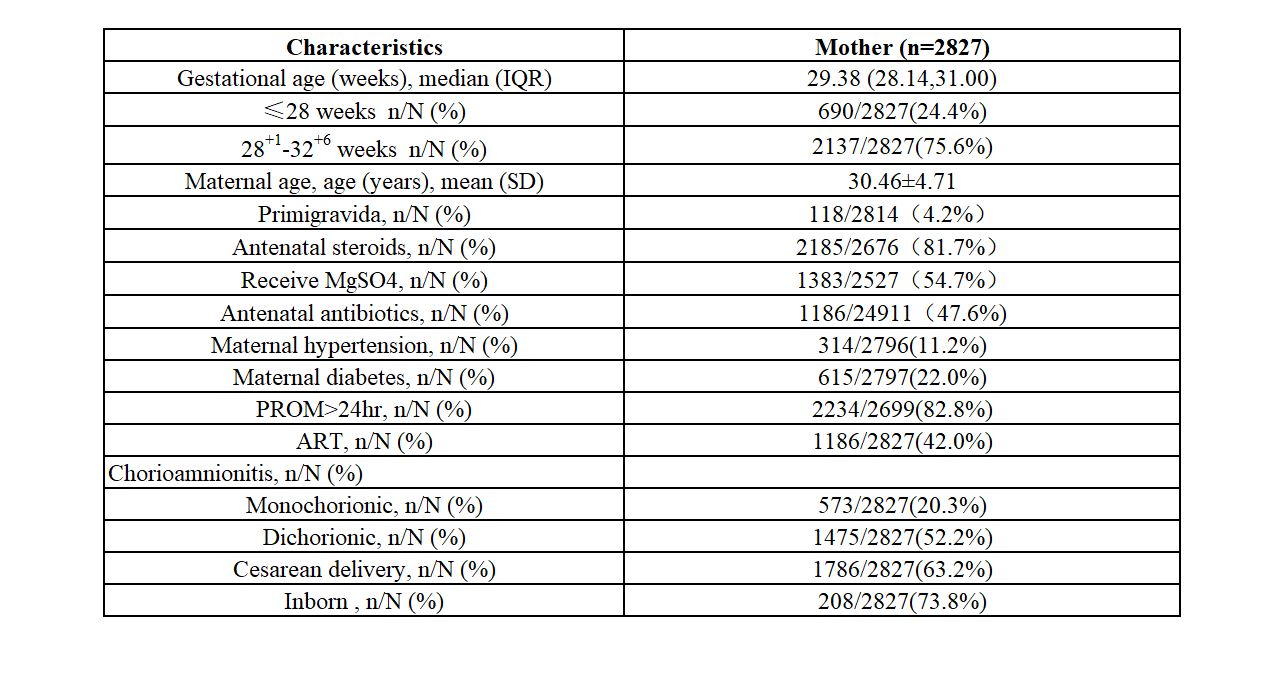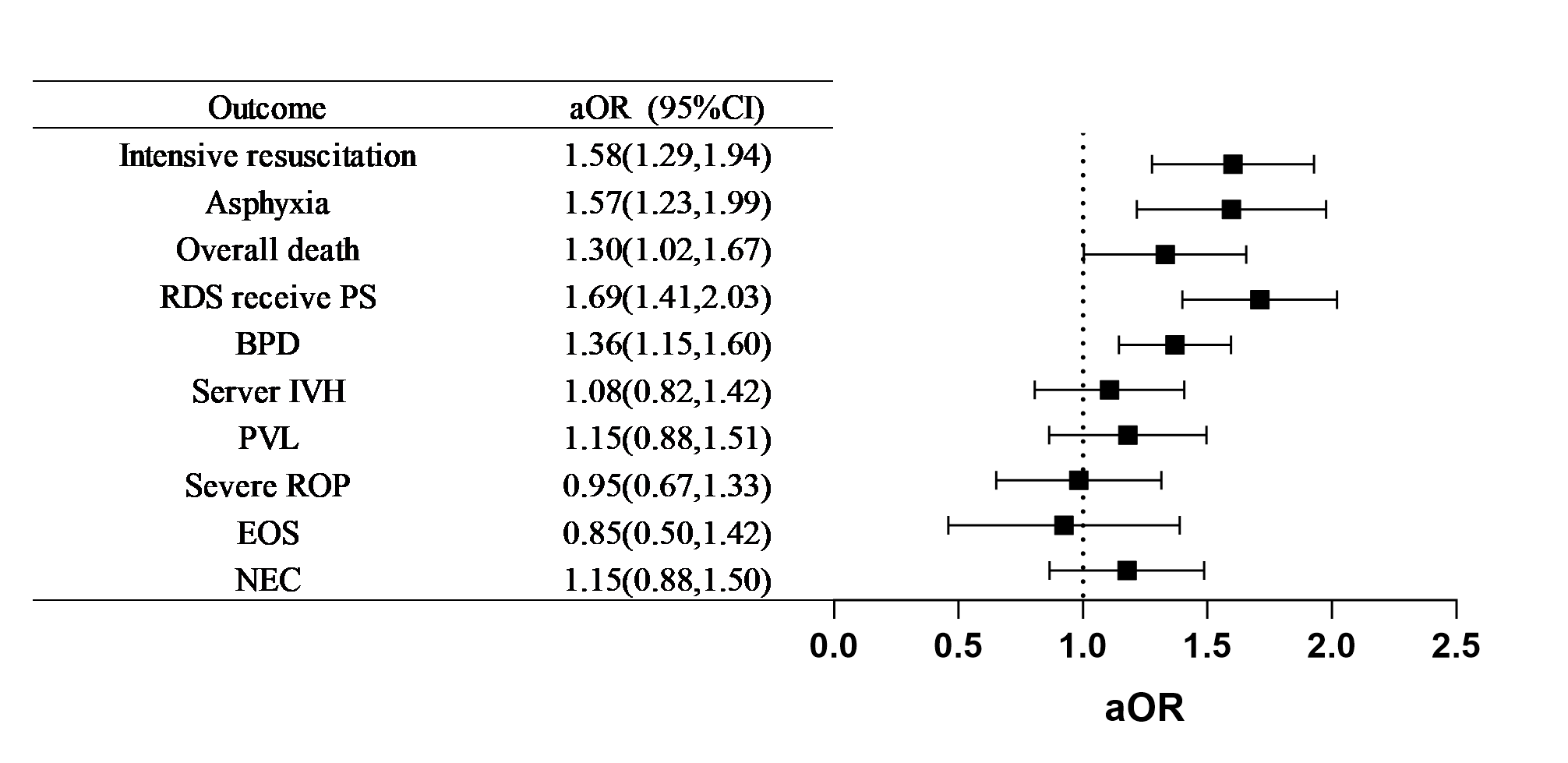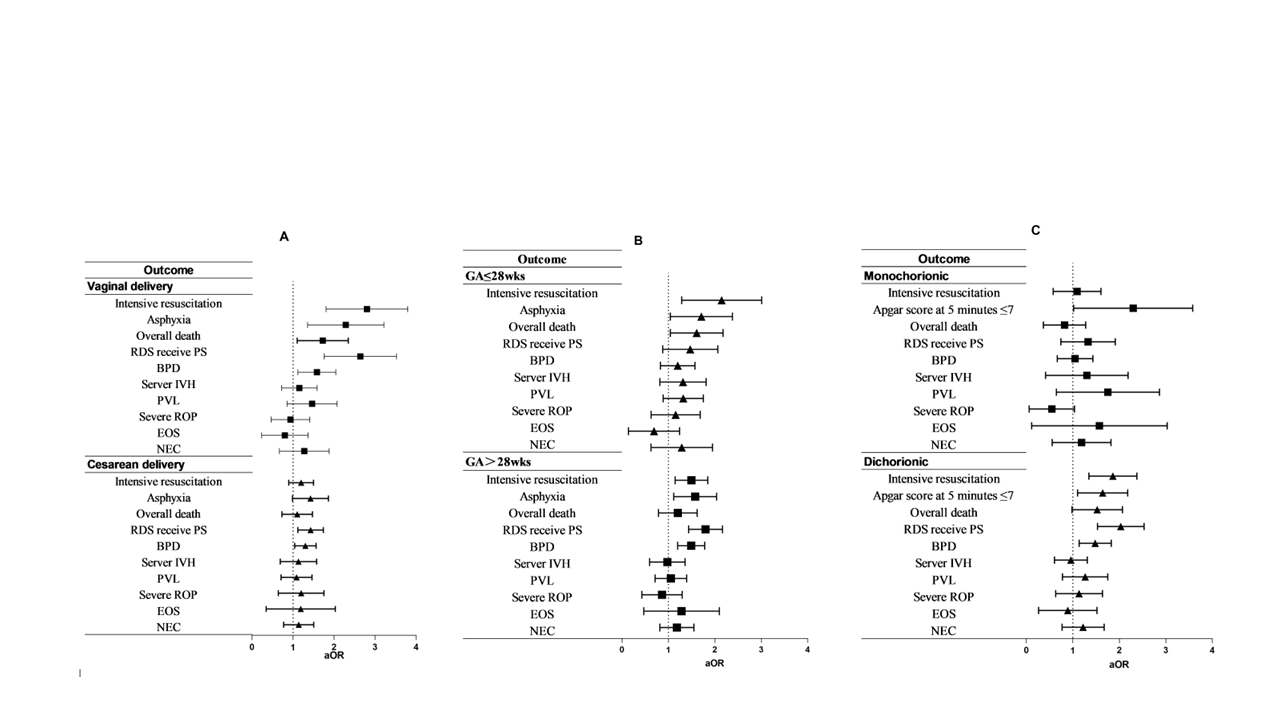Neonatal/Infant Resuscitation 3
Session: Neonatal/Infant Resuscitation 3
387 - The association of birth order in twins with adverse neonatal outcome in very preterm infants
Monday, April 28, 2025
7:00am - 9:15am HST
Publication Number: 387.6662
Yuru Zhu, Gansu Provincial Maternity and Child Care Hospital(Gansu Provincial Central Hospital), Lanzhou, Gansu, China (People's Republic); Jingyun shi, Gansu provincial maternal and child hospital, LANZHOU, Gansu, China (People's Republic); yu hu, Shengjing Hospital of China Medical University, Shenyang, Liaoning, China (People's Republic); Yun Cao, Children's Hospital, Fudan University, Shanghai, PRC, Shanghai, Shanghai, China (People's Republic); Siyuan Jiang, Children's Hospital of Fudan University, Shanghai, Shanghai, China (People's Republic); Jie Yang, Fudan Children's Hospital, China, Shanghai, China (People's Republic)

Yuru Zhu
n/a
Gansu Provincial Maternity and Child Care Hospital(Gansu Provincial Central Hospital)
Lanzhou, Gansu, China (People's Republic)
Presenting Author(s)
Background: Twin pregnancies carry a higher risk of preterm birth or other adverse perinatal outcomes,but previous studies have controversy whether there are differences in outcomes between twins.
Objective: To evaluate the association between birth order of twin and outcomes in very preterm infants.
Design/Methods: A cohort study of twin pairs with GA less than 32 and admitted to the tertiary NICUs in the Chinese Neonatal Network (CHNN) between January 1st, 2019 and December 31st, 2021. Only one twin admitted to the hospital, with unknown birth order or inconsistent delivery method and major congenital anomaly or chromosomal disorders in either was excluded. The neonatal outcomes included asphyxia (Apgar score ≤7 at 5min), intensive resuscitation (accepted either of intubation, chest compression and epinephrine) and the mortality and morbidity (such as RDS, NEC, IVH, PVL, EOS, ROP and BPD). The conditional logistic regression was applied to investigate the association of birth order with neonatal outcomes with adjustment for birth weight and gender. Subgroup analyses were performed stratified by modes of delivery, gestational age and choriogenicity.
Results: A total of 2827 twin pairs were enrolled. The second-born twin required more intensive resuscitation (OR:1.58; 95% CI: 1.29,1.94) and asphyxia (OR:1.57; 95% CI: 1.23,1.99) were significantly higher than first-born twins. Mortality was significantly higher in second-born twins (OR:1.30; 95% CI: 1.02,1.67).RDS received PS (OR:1.64 95% CI:1.31,2.05) and BPD (OR:1.36; 95% CI: 1.15,1.60) were also significantly higher in the second (Figure1). Subgroup analysis showed that twin pairs delivered vaginally had a greater risk of adverse outcomes compared with cesarean section (Figure2A). The difference between intensive resuscitation and mortality rates was more pronounced in twins < 28 weeks. In twins with GA ≥28 weeks, the differences in PS use and BPD risk were more significant(Figure2B). Compared with monochorionic twins, dichorionic twins had a higher risk of adverse outcomes in the second child than in the first (Figure2C).
Conclusion(s): Our study suggests the second-born twins have a high risk of asphyxia and require more intensive resuscitation, especially for extremely preterm infant. and the risk of RDS, BPD and death after birth is also higher, especially in vaginal delivery and dichorionic twins. Therefore, we should pay more attention to the perinatal management of twins, especially the second-born twins.
Table 1: Characteristics of twin pairs

Figure 1 Association between birth order and neonatal outcomes

Figure 2 subgroup analysis of association between birth order and neonatal outcomes


